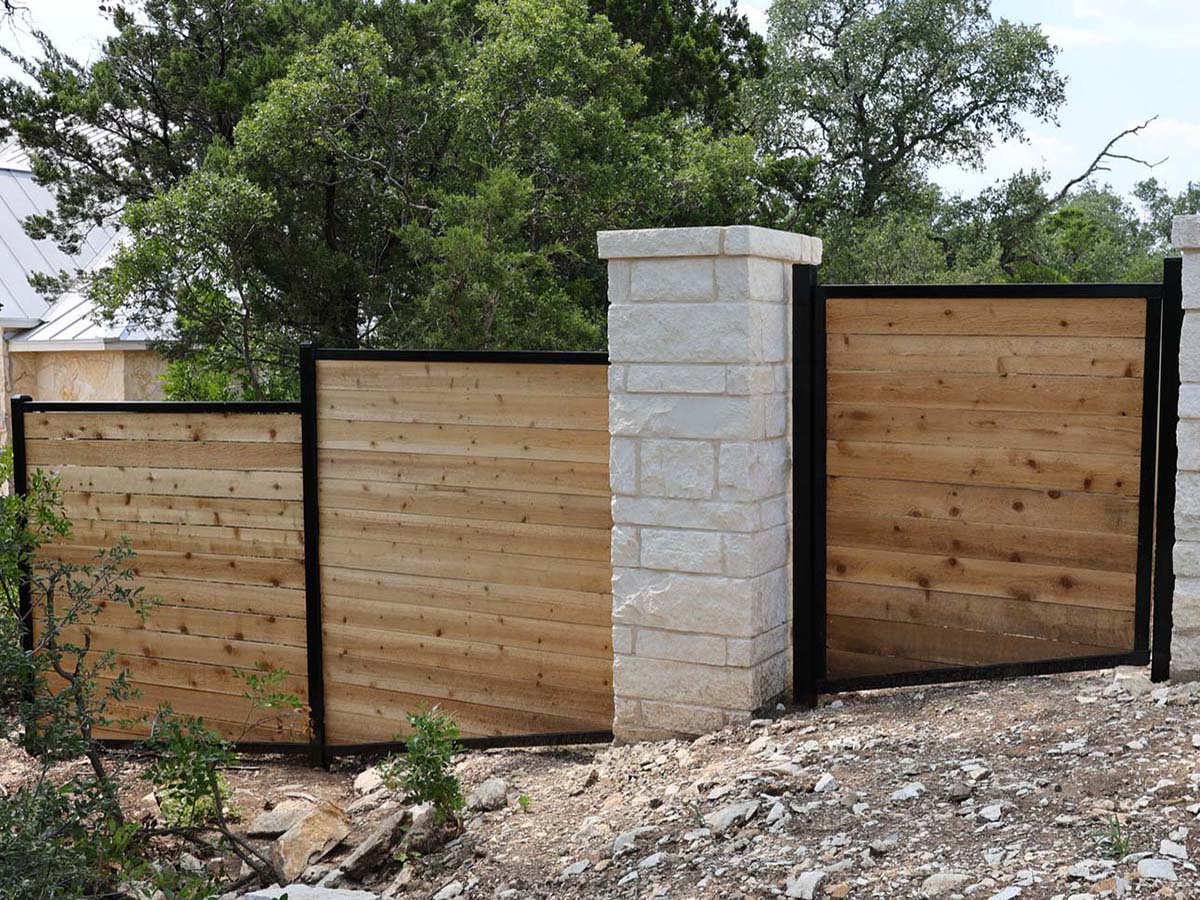All Categories
Featured

Your fence is a vital part of your residential or commercial property, using security, personal privacy, and aesthetic appeal. There are several methods you can carry out to secure your fencing and extend its life.
- Choose the Right Material. The very first action in securing your fence from weather-related damages is to select the right product for your environment. Some materials are more immune to the elements than others.
Wood Fencings: While standard wooden fences offer an all-natural, attractive look, they are particularly susceptible to water rot, pest, and damages invasion. If you select wood, pick pressure-treated lumber or timber kinds that are a lot more immune to dampness, such as cedar or redwood. Plastic Fencings: Vinyl is a low-maintenance choice that resists fading, splitting, and bending. It's additionally unsusceptible to rot and insects, making it perfect for locations with high moisture or direct exposure to rain. Steel Fencings: Light weight aluminum and wrought iron fencings are long lasting and resistant to weathering. Nevertheless, they can corrosion if exposed to moisture for prolonged durations. Select a powder-coated or galvanized steel fencing to lower the risk of rust. Composite Fences: These are made from a mix of timber fibers and plastic, supplying the best of both worlds-- toughness and an all-natural look. Composite fencings are immune to moisture, fading, and deteriorating, making them wonderful for environments with regular rainfall or snow. 2. Apply Protective Coatings. Regardless of the product, using a protective coating can help safeguard your fence from climate damage.

Wood Fences: A good-quality tarnish or sealer can aid shield your timber fence from moisture, UV rays, and insects. These coverings produce an obstacle that stops water from leaking right into the wood and triggering rot. You should apply a fresh coat of sealer every pair or discolor of years, relying on your climate and the level of direct exposure to rainfall and sunlight. Plastic Fences: Although plastic fencings are usually immune to weathering, they can still struggle with staining as a result of the sun's UV rays. You can utilize specialized plastic cleansers or UV protectants to maintain the shade and appearance of your fencing. Metal Fences: For metal fences, consider applying a rust-resistant guide and a layer of paint developed for outdoor use. Powder finish is an additional outstanding option for steel fencings, as it produces a resilient, weather-resistant surface that stands up to rust and rust. 3. Routine Cleansing and Maintenance. Maintaining your fencing regularly is vital to protecting against damages from the aspects. Dust, leaves, and other debris can construct up on your fencing, which can trigger staining, mold, and mold in time.
Wood Fencings: Clean your wooden fence every six months with a light detergent solution or a stress washing machine (on a low setting) to eliminate dirt and crud. Watch out for very early signs of rot, especially at the base of the fencing posts where moisture tends to collect. Plastic Fences: Vinyl fences are easy to tidy with soap and water. Make use of a blend of vinegar and water to carefully scrub the influenced areas if you see mold and mildew or mildew. Prevent harsh chemicals that could damage the surface area. Metal Fencings: On a regular basis tidy metal fences with a soft cloth or sponge to get rid of rust-causing particles. For wrought iron fencings, take into consideration applying a rust-inhibiting item to avoid deterioration. 4. Correct Installation and Positioning. Correct installment of your fence can go a lengthy means in protecting it from weather-related damages. Make certain that your fencing is securely anchored which messages are set deep sufficient into the ground to prevent moving during hefty winds or tornados. Installing supporting at essential factors can offer additional support. if your fencing is subject to heavy winds.
Furthermore, consider the positioning of your fencing. Plant hedges or trees tactically around your fence to give some natural security from rough winds, extreme sunlight, or driving rainfall if possible. Be careful not to plant too close to the fence, as roots can damage or change messages over time.
- Address Tornado Damages Promptly. Tornados, particularly those with high winds or hail storm, can create immediate damage to your fencing. After a tornado, evaluate your fencing for damaged sections, leaning articles, or fallen debris. Attending to damages promptly can stop more issues down the line. If you observe small damage, such as small cracks or loosened panels, repair them today to stop water from leaking in and creating more comprehensive damage.
- Winterize Your Fencing. Cold temperatures and ice can be particularly harming to wood fences. To avoid this, make sure that the base of your fencing blog posts is raised and not resting in pooled water.
Conclusion. Weather-related damage is an unavoidable part of having a fencing, however with the best precautions and normal maintenance, you can substantially expand the life of your fence. Pick sturdy products matched for your environment, apply protective finishes, clean on a regular basis, and make sure correct installment. With these steps, you can safeguard your fencing from the elements and keep its appearance and functionality for years to find.
Latest Posts
Developed on High Quality, Driven by Service
Published Apr 21, 25
1 min read
Safeguard Your Home with Gutter Solutions for Illinois Environment
Published Apr 21, 25
2 min read
Maintain Your Carpeting Looking Its Best with Easy, Professional Treatment
Published Apr 20, 25
2 min read
More
Latest Posts
Developed on High Quality, Driven by Service
Published Apr 21, 25
1 min read
Safeguard Your Home with Gutter Solutions for Illinois Environment
Published Apr 21, 25
2 min read
Maintain Your Carpeting Looking Its Best with Easy, Professional Treatment
Published Apr 20, 25
2 min read